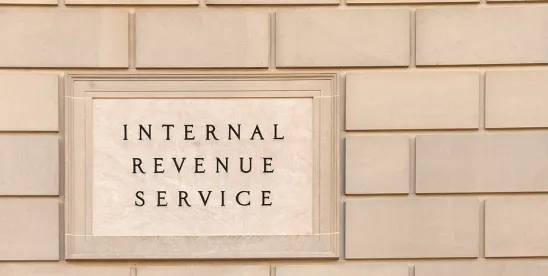With the allure of tax incentives for foreign derived intangible income and an increase in foreign audits scrutinizing transfer pricing, bringing intellectual property (IP) back to the United States is increasingly attractive. Newly issued final IP repatriation regulations make the tax consequences of repatriating previously offshored IP more predictable and eliminate the risk of potential double taxation.
On October 10, 2024, the US Department of the Treasury and the Internal Revenue Service (IRS) released final regulations under § 367(d) regarding the tax consequences of certain IP repatriations. The final regulations largely follow the proposed regulations issued in May 2023, with minor modifications. These regulations apply to IP repatriations that occur on or after October 10, 2024.
Background on § 367(d)
Section 367(d) and the corresponding regulations were designed to prevent US companies from avoiding US tax by transferring valuable IP to foreign affiliates. Generally, when a US person transfers IP to a foreign corporation in a nonrecognition transaction, the transfer is treated as a sale in exchange for payments contingent on the productivity, use, or disposition of the IP. This means that the US transferor is deemed to receive annual royalty payments over the useful life of the IP, reflecting the income that would have been generated by the IP.
Prior to the release of the latest regulations, the § 367(d) regime provided “subsequent transfer” rules that could result in an immediate income inclusion of the remaining deemed royalty amount if the US transferor transferred the stock of the transferee foreign corporation, or the transferee foreign corporation transferred the IP. However, the prior regulations did not clearly address the tax implications when the IP was repatriated back to the US, leading to uncertainty and potential double taxation. The final regulations clarify the treatment of repatriated IP under § 367(d). The regulations are generally taxpayer friendly and are expected to reduce the tax burden on US companies repatriating IP.
Key Provisions of the Final Regulations
Termination of Annual Royalty Inclusions
The final regulations terminate the deemed royalty inclusions when the IP is repatriated and certain conditions are met. The US transferor is no longer required to include deemed royalty payments in its income if the transferee foreign corporation transfers the IP to a qualified domestic person (QDP), which could be the original US transferor, a successor US transferor, or a related US person, provided the person is subject to US tax. To benefit from the termination of deemed royalty inclusions, the US transferor also must comply with specific reporting requirements, including providing detailed information about the repatriation transaction to the IRS.
Gain Recognized by the US Transferor
The US transferor must recognize gain equal to the fair market value of the IP at the time of repatriation. The amount of gain recognized by the US transferor depends on whether the IP is “transferred basis property.” If the IP is transferred basis property, the gain recognized is the amount the foreign corporation would have recognized if its adjusted basis were the US transferor’s original basis in the IP. If the IP is not transferred basis property, the gain recognized is the difference between the IP’s fair market value at the time of the repatriation and the US transferor’s former basis.
Basis in Repatriated IP
The basis of the repatriated IP in the hands of the QDP also depends on whether the IP is transferred basis property. If the IP is transferred basis property, the QDP’s basis is the lesser of the US transferor’s original basis or the foreign corporation’s adjusted basis immediately before the repatriation, plus the greater of the gain (if any) recognized by the US transferor or the gain (if any) recognized by the transferee foreign corporation. If the IP is not transferred basis property, the QDP’s basis is the fair market value of the IP at the time of the repatriation.
Special Rules for Multiple Related Transactions
The final regulations include provisions for situations where the IP is repatriated through multiple related transactions. In such cases, the initial recipient of the IP is treated as a QDP only if the ultimate recipient also qualifies as a QDP.
Conclusion
The final § 367(d) regulations provide welcome clarity and reduce the tax burden on taxpayers that repatriate IP. However, the final regulations do not resolve every question regarding IP repatriations. For example, the regulations do not address the consequences of repatriation if there were pre-payments of the deemed § 367(d) royalty or the interaction of § 367(d) with § 951A and other code provisions upon a repatriation. These unresolved questions may be the subject of future Treasury and IRS guidance projects.




 />i
/>i
